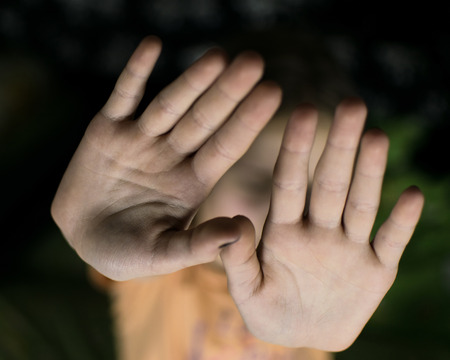Introduction: British Palmistry in Context
Palmistry, known colloquially across Britain as “cheiromancy” or simply “hand reading,” has occupied a distinctive niche within the cultural and social fabric of the UK for centuries. Rooted in a blend of ancient folklore, Victorian curiosity, and contemporary spirituality, palmistry has transcended mere superstition to become a lens through which individuals have sought to understand character, destiny, and interpersonal dynamics. Importantly, its role extends beyond entertainment at village fêtes or parlour amusements; it has served as both a mirror and a mediator for evolving concepts of gender and identity within British society. In exploring how finger shapes are interpreted through the prism of palmistry, it becomes clear that this practice reflects deeper societal values and anxieties regarding masculinity, femininity, and the spectrum of identities in between. By situating palmistry within its historical context—ranging from the days of Romani fortune tellers in bustling market towns to today’s inclusive spiritual circles—we begin to appreciate its ongoing influence on how Britons engage with questions of selfhood, belonging, and social roles.
2. The Language of Hands: Key British Terminology and Interpretive Frameworks
British palmistry, with its roots in both folklore and structured esoteric traditions, employs a distinctive lexicon and methodology when interpreting finger shapes through the lens of gender and identity. Understanding this language is essential for appreciating how readings are shaped by social context, regional influences, and evolving notions of gender within the UK.
Key Vocabulary and Colloquialisms
Palmists across Britain often use terminology that reflects both historical continuity and contemporary shifts. Terms such as “gent’s fingers” and “lady’s lines” have traditionally been employed, though modern readers may opt for more neutral phrasing like “assertive digits” or “receptive knuckles.” Moreover, colloquialisms—such as “spanner fingers” (broad, practical hands) or “poet’s tips” (tapered fingertips)—add a uniquely British flavour to analysis.
| Traditional Term | Modern Equivalent | Implication in Gendered Reading |
|---|---|---|
| Gent’s Fingers | Assertive Digits | Traditionally linked to masculine traits such as confidence and leadership; modern readings acknowledge these qualities across genders. |
| Lady’s Lines | Receptive Knuckles | Historically associated with femininity and intuition; now understood as indicative of empathy regardless of gender identity. |
| Poet’s Tips | Tapered Fingertips | Signifies creativity and sensitivity, considered beyond binary classifications today. |
Analytical Methods: Systematic Frameworks
The British approach to palmistry relies on a blend of observation, tradition, and empirical systems. Analysts consider not only finger length and shape but also proportion relative to palm size—a method known locally as the “Golden Ratio Test.” This is often paired with qualitative assessments involving flexibility (“bendy fingers”) and finger spacing (“gap gauge”), which are interpreted in relation to societal expectations of gender expression.
The Gender Spectrum in Interpretation
A significant shift in recent decades is the move away from binary interpretations towards a spectrum-based understanding. Contemporary British palmists increasingly recognise the diversity of identity, using inclusive frameworks that respect non-binary and transgender experiences. For instance, rather than assigning “masculine” or “feminine” solely based on physical traits, practitioners now discuss the potential for fluidity—acknowledging that finger characteristics may reflect complex personal journeys.
Summary Table: Interpretive Approaches Across the Spectrum
| Approach | Description |
|---|---|
| Binary Framework | Categorises finger shapes strictly as masculine or feminine; increasingly considered outdated. |
| Spectrum Analysis | Considers finger attributes along a continuum, allowing for nuanced interpretations reflective of diverse identities. |
This evolution in language and methodology ensures that British palmistry remains relevant in discussions about gender and identity, fostering inclusivity while respecting its rich cultural heritage.
![]()
3. Finger Shapes and Traditional Gender Interpretations
Throughout the history of British palmistry, finger shapes have served as an intriguing locus for interpreting gender identities. Classic palmistry manuals, such as Cheiro’s “Palmistry for All” and early twentieth-century British guides, systematically linked particular finger forms to binary gender characteristics, reflecting wider cultural beliefs and social expectations of their time.
Historical Associations with Masculinity and Femininity
Traditionally, thicker, more square-tipped fingers were classified as markers of masculinity. Palmists interpreted these features as signs of practicality, assertiveness, and rational thinking—qualities historically valorised in men within the UK’s patriarchal society. Conversely, slender or tapering fingers were viewed as indicative of femininity, signifying refinement, sensitivity, and artistic inclinations. Such readings mirrored Victorian-era ideals of women as nurturing, intuitive, and delicate.
Folklore and Regional Variations
British folklore further nuanced these interpretations. In rural English counties, legends suggested that women with strong, knotted joints possessed “witches’ fingers,” believed to carry intuitive wisdom but also feared for their subversive power. Meanwhile, Scottish traditions occasionally attributed long, graceful fingers to both male and female seers, subtly challenging rigid gender binaries even within historic narratives.
Binary Constraints in Classic Texts
The prevailing binary framework was reinforced by classic texts that rarely acknowledged ambiguity or overlap between masculine and feminine traits. Manuals often prescribed distinct paths for men and women based on finger morphology, reinforcing established social hierarchies. This system left little room for those whose finger shapes—or personal identities—did not conform neatly to binary classifications.
Thus, the traditional British approach to reading finger shapes in palmistry both reflected and perpetuated broader societal norms around gender. While some regional folklore hinted at more fluid interpretations, the dominant narrative in classic literature remained rooted in binary distinctions—a legacy that contemporary practitioners are now beginning to question and reinterpret.
4. Beyond the Binary: Contemporary British Approaches to Gender Diversity
Modern British palmistry has undergone a significant transformation in recent years, reflecting broader societal shifts towards inclusivity and recognition of gender diversity. Traditional readings often relied on binary interpretations—attributing certain finger shapes and characteristics exclusively to male or female identities. However, as the understanding of gender has expanded, so too have the frameworks employed by contemporary palmists across the UK.
Inclusive Interpretations in Practice
Today’s British palmists approach finger shape analysis with a more nuanced perspective. Rather than assigning rigidly gendered meanings to features such as finger length, curvature, or knuckle prominence, they consider these attributes along a spectrum. This allows for readings that are sensitive to non-binary and gender-diverse individuals’ experiences, fostering a sense of belonging and respect within the practice.
Evolving Symbolism of Finger Shapes
Palmists now recognise that traits previously labelled as ‘masculine’ or ‘feminine’—for example, square versus tapered fingertips—can be present in any individual, regardless of their gender identity. The focus shifts from categorisation to exploration of how these physical features might reflect unique aspects of personality and life path, rather than prescriptive gender roles.
Comparative Table: Traditional vs Contemporary Interpretations
| Finger Shape Feature | Traditional Binary Interpretation | Contemporary Inclusive Interpretation |
|---|---|---|
| Square Fingertips | Traditionally masculine; associated with practicality | May indicate groundedness and pragmatism in anyone, irrespective of gender identity |
| Tapered Fingertips | Traditionally feminine; linked to creativity and sensitivity | Seen as a sign of artistic thinking or empathy across the spectrum |
| Prominent Knuckles | Often read as assertive (masculine) | Now interpreted as intellectual curiosity or determination, not tied to gender |
| Slim Fingers | Associated with delicacy (feminine) | Viewed as an indicator of adaptability or intuition, open to all identities |
Cultural Sensitivity and Language Use
In line with evolving British values around equality and respect, palmists are increasingly mindful of language during consultations. Terms like ‘masculine’ and ‘feminine’ are used descriptively rather than prescriptively—or omitted altogether—in favour of qualities such as confidence, empathy, or resilience. This linguistic shift mirrors wider trends in UK culture towards greater acceptance and support for LGBTQ+ communities.
The Role of Self-Identification in Readings
A key aspect of inclusive palmistry is the invitation for clients to define their own identities before analysis begins. This practice ensures that readings are tailored to the individual’s lived experience rather than imposed social expectations. Ultimately, this reflects a broader commitment within British society to honour diversity and empower personal narratives through holistic self-understanding.
5. Identity, Intersectionality, and the Ethics of Interpretation
As palmistry evolves within the diverse fabric of contemporary British society, ethical considerations take centre stage when interpreting gender and identity through finger shape. The practice is no longer isolated from broader cultural dialogues about equality, representation, and respect for individual experience. With increased awareness of gender diversity and intersectionality, modern palmists face the challenge of avoiding reductive or stereotypical readings that may reinforce outdated norms.
Potential Biases in Palm Readings
Palmistry, like any interpretative practice, can be influenced by personal biases—conscious or otherwise. In Britain’s multicultural context, palmists must be acutely aware of how their own beliefs about gender and identity could colour their interpretations. Traditional readings often rely on binary notions of masculinity and femininity, which risk marginalising those who exist outside these categories. There is an ethical imperative to ensure that interpretations do not invalidate or misrepresent clients’ lived experiences.
The Role of Intersectionality
Intersectionality recognises that individuals’ identities are shaped by multiple factors including race, class, sexuality, religion, and disability. In British palmistry, this means appreciating how these overlapping identities influence both the palmist’s perspective and the client’s self-understanding. For example, a reading for a queer woman of colour may require a different approach than one for a cisgender white man. Ethical practitioners strive to honour all facets of identity rather than reduce people to one-dimensional archetypes based solely on finger shape.
Ensuring Ethical Practice
To uphold ethical standards, British palmists increasingly engage with ongoing education around inclusivity and unconscious bias. Many adopt non-prescriptive language and invite clients to share their own understandings of identity prior to any interpretation. Confidentiality and respect are paramount; the aim is to empower clients rather than impose narratives upon them. By fostering an environment of trust and openness, palmistry can become a more supportive tool for exploring the rich spectrum of gender and identity in modern Britain.
6. Conclusions: The Future of Palmistry and Identity in Britain
As British society continues to embrace a more nuanced and inclusive understanding of gender and identity, the practice of palmistry must similarly adapt to reflect these cultural shifts. Historically, traditional British palmistry often relied on binary interpretations—assigning specific finger shapes and traits exclusively to men or women. However, ongoing social progress is challenging these conventions, demanding a more flexible and respectful approach that acknowledges the diversity of human experience.
Looking forward, palmists in Britain are increasingly likely to move away from rigid gender binaries. Instead, they may adopt systems that allow for greater individual variation, recognising that finger shape interpretations can offer insights into personality and identity without being constrained by outdated gender stereotypes. This evolution will require practitioners to engage with contemporary discussions around gender fluidity, non-binary identities, and intersectionality. By doing so, palmistry could become an empowering tool for self-discovery that resonates with people across the spectrum of gender and identity.
However, this transformation is not without its challenges. Traditionalists within the community may resist change, preferring established methods rooted in historical precedent. There is also the risk of oversimplifying or appropriating complex identities through superficial readings. To address these concerns, palmists must prioritise education, sensitivity, and dialogue—both within their own ranks and with those whose hands they read.
Ultimately, the future of British palmistry lies in its ability to honour individuality while drawing on centuries-old wisdom. As Britain’s cultural landscape continues to evolve, so too will the meanings found in the lines and shapes of our hands—each reading becoming an opportunity to celebrate both difference and connection in the modern age.


